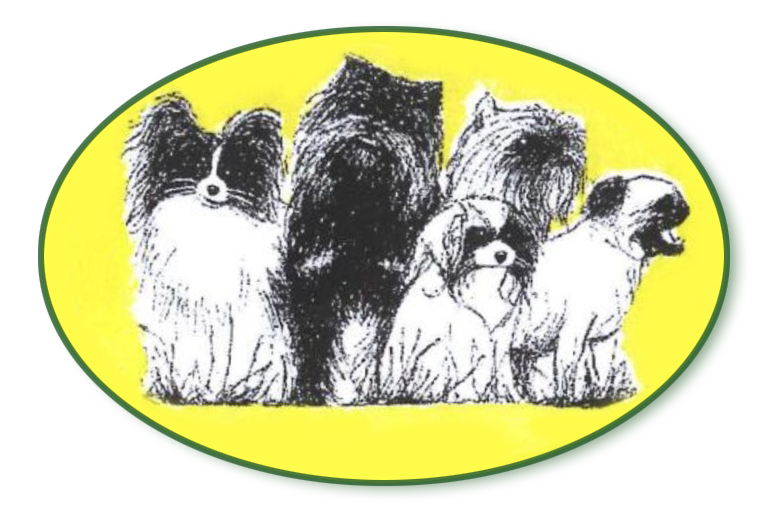What is syringomyelia? (SM)
Syringomyelia (SM) is a condition characterized by the occurrence of fluid-filled cavities (syrinxes) in the spinal cord (myelum). The most common predisposition for the development of syringomyelia is Chiari-like malformation. Both conditions CM/SM are often mentioned as one term, but appear to be two different conditions that can still be related.
What is Chiari-like malformation? (CM)
The canine definition of CM has evolved over the last decade reflecting an increased understanding of its pathogenesis, and is no longer considered simply a reduced caudal fossa with an impacted and/or herniated cerebellum through the foramen magnum which compromises CSF channels.
The most shared manifestation of CM is the development of fluid-filled pockets (syrinx, syringes) in the spinal cord that can be readily quantified.
In 2011, the British Veterinary Association (BVA)/Kennel Club (KC), as part of the CM/SM health screening programme, define 3 grades for CM (CM0-2) whereby the cerebellar morphology is assessed as a measure of overcrowding of the caudal fossa: the cerebellum in CM0 has a rounded shape with a high intensity signal on T2-weighted images consistent with CSF between the caudal cerebellar vermis and the foramen magnum; CM1 the cerebellum does not have a rounded shape, i.e., there is indentation by the supraoccipital bone, but there is a signal consistent with CSF between the caudal vermis and the foramen magnum, and CM2 the cerebellar vermis is impacted into or herniated through the foramen magnum. This historic grading system defined by the cerebellum does not relate to the severity of SM nor take account of dogs without CM but with SM. Susan P. Knowler, Gabriel L. Galea, Clare Rusbridge)
What causes CM?
The etiology of CM is multifactorial, potentially including genetically-influenced, breed-specific abnormalities in both skeletal and neural components. Since causation between specific morphologic changes and SM or clinical signs is unproven, CM might be more appropriately considered as a brachycephalic obstructive CSF channel syndrome (BOCCS) rather than a single malformation. (Morphogenesis of Canine Chiari Malformation and Secondary Syringomyelia: Disorders of Cerebrospinal Fluid Circulation. Susan P. Knowler, Gabriel L. Galea, Clare Rusbridge)
CM and secundary SM
A considerable body of research has been undertaken worldwide to understand the relationship/s between CM and SM in an attempt to elucidate the pathogenesis of SM in the dog. Attention has focused on secondary SM rather than CM.
In which breeds is CM/SM reported?
Chiari-like malformation and Syringomyelia are inherited abnormalities that are common in brachycephale breeds. It is not surprising that failure to fit skull capacity and brain size is considered a condition associated with brachycephaly and miniaturization (companion breeds). Both CM/SM conditions have so far been the most frequently investigated in the Cavalier King Charles Spaniel. Other breeds for which CM/SM was identified are the Affenpinscher, the King Charles Spaniel, the Brussels Griffon, the Yorkshire Terrier, the Maltese, the Chihuahua, the Pug, the Pomeranian, the Papillon, the Shih Tzu, the Jack Russel Terrier, the Boston Terrier, the Staffordshire Bull Terrier, the French Bulldog, the Dachshund, Bichon Frise and several cross breedings. Despite the considerable variation in skull shape and body weight, these breeds are accepted as being small in size but not all are recognised in the dog world as brachycephalic.
What are the symptoms of syringomyelia?
The most important and recurring symptom is pain. A common symptom is that many animals try to scratch themselves during movement. The animal sometimes just scratches in the air without touching itself. In some cases the dogs even walk on 3 legs.
Some animals are hypersensitive when touching the shoulder, neck or ear, usually on one side. Other symptoms that may be present is the difficulty to get up or neurological symptoms such as incoordination, walking in circles, walking along the wall and loss of power of front and/or hindquarters.
How do we make the diagnosis?
Based on the clinical symptoms, the breed and the owner's story, we establish the probability diagnosis that can only be confirmed with an MRI. Also the severity of the condition (size of the cavities in the spinal cord and location of the cerebellum) can only be assessed with an MRI.
Breeding advice for breeders
In collaboration with a number of neurologists and academics from the most important universities in the Netherlands and Belgium, the National Breeding Commission has drawn up a breeding schedule that fits in with a sustainable breeding policy of smart combining without unnecessary exclusions in small populations.
Category classification:
| Category 1 | Dogs younger than 2.5 years with 0 mm CCD Dogs older than 2.5 years with maximum 2 mm CCD |
|---|---|
| Category 2 | All other dogs without clinical symptoms |
| Category 3 | Dogs with clinical symptoms (do not breed with them) |
Breeding advice:
Recommendation for breeding : category 1 x category 1 or category 1 x category 2 or using estimated breeding values when available.
| Bitch | ||||
| Category 1 | Category 2 | Category 3 | ||
| Dog | Category 1 | |||
| Category 2 | ||||
| Category 3 | ||||
Legend:
| Recommended | Combination recommended for breeding |
| Not recommended | Combination not recommended for breeding |
| Not allowed | Combination not allowed for breeding |
Where to do the MRI scan as a breeder?
Animal clinic “Den Heuvel”
Oirschotseweg 113a-5684 NH Best
Netherlands
+31 (0)499 37 42 05
info@dierenkliniekdenheuvel.nl
http://www.dierenkliniekdenheuvel.nl
Faculty of Veterinary Medicine
University Ghent
Salisburylaan 133
9820 Merelbeke
Belgium
Animal Clinic “Orion”
Voortkapelseweg 77
2200 Herentals
Belgium
+32 (0)14 26 11 00
info@dierenkliniek-orion.be
http://www.dierenkliniek-orion.be
